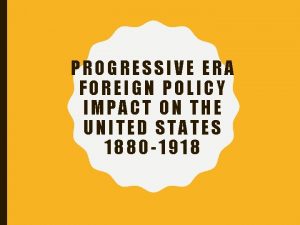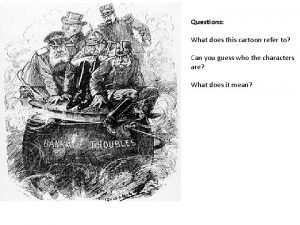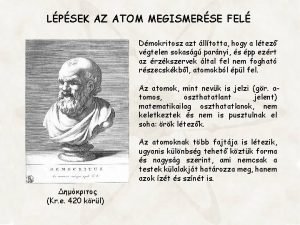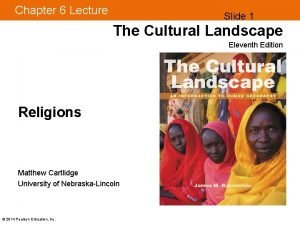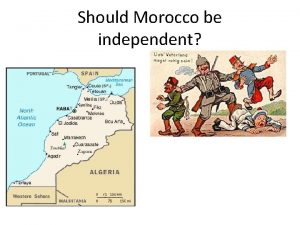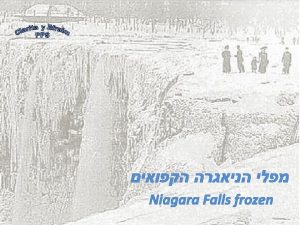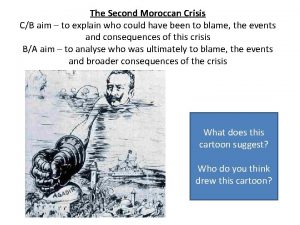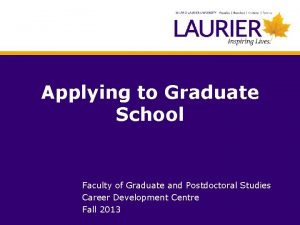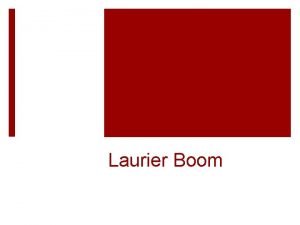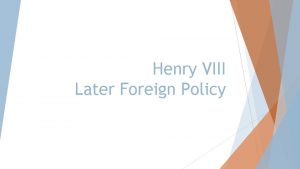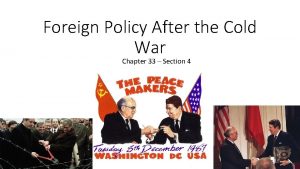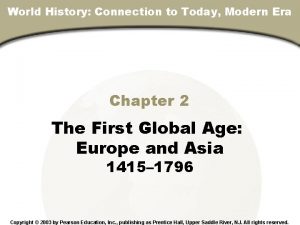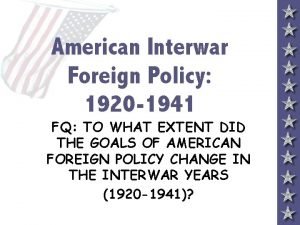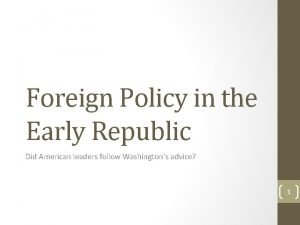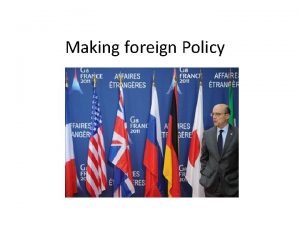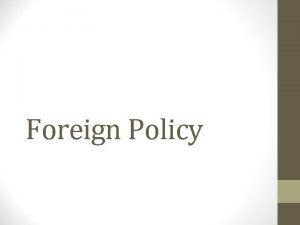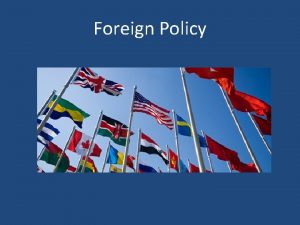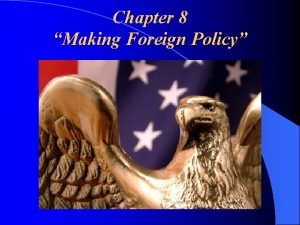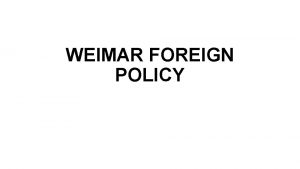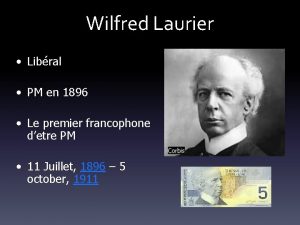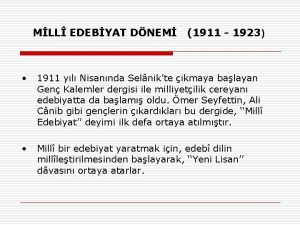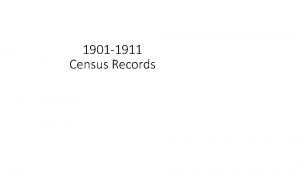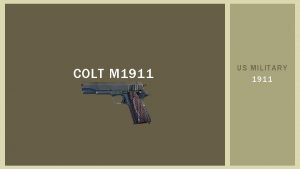The Laurier Era Foreign Policy 1896 1911 Canada
























- Slides: 24

The Laurier Era Foreign Policy 1896 -1911

Canada Profile – 1896 -1911 o o Becomes a nation in 1867 Population in 1900 is approx. 5 million Today it is approx. 33 million Population mostly French Catholic and English Protestant

Population – Turn of the Century o o o Rural – mostly farmers, fishers, loggers, construction workers Social activity – baseball / hockey games, church socials Local travel – horse and buggy Long-distance travel – train Few / no cars

Settling the West o o New minister of the interior – Clifford Sifton. Looked for immigrants that would have what it takes to be a ‘Canadian farmer’ Many immigrants came from central and eastern Europe Free land Freedom of religion

Settling the West o Doukhobors – Religious Group / Russia

Settling the West o Immigrants coming to Canada o Small homestead

Canadian Immigration

Canadian Natural Resources o Timber 1. construction 2. pulp and paper o Minerals: copper, iron, nickel Last Spike, 1885 o Trains – linked Canada coast to coast

Cities 1900’s Cities growing - factories - jobs o Divide between the rich and poor grew - factory owners got richlived in big houses - Factory workers were poorly paid – lived in slums o

French English Relations o o 1867 - French Canadian Majority 1900 – English Canadian Majority. Most new immigrants strongly connected to Britain and her empire Great sense of British Nationalism French Canadians feel threatened by British majority –especially in politics o Canadian Flag 1867

French English Relations o o Sir Wilfrid Laurier P. M. 1896 -1911 Canada’s first French Canadian Prime Minister The “Great Compromiser“ How do you please your French Canadian supporters while also pleasing the English Canadian majority?

Wilfrid Laurier - French English Relations

The British Empire

Issue #1 The Boer War 1899

Issue #1 The Boer War 1899

Issue #1 The Boer War 1899 o British are fighting the Dutch Afrikaners over South Africa – diamonds and gold o British turn to their empire, and ask Canada to support them o Canada divided: o Sir Wilfrid Laurier compromises: Sends only volunteers Significance: French Canadians – say no English Canadians – say yes 1. Shows how French and English Canada is divided 2. Shows Canada’s strong ties to Britain and Empire 3. Foreshadows Canada’s involvement in WW 1

Issue #2 The Naval Crisis 1910 o Britain is in an arms race with Germany (battleships – dreadnoughts) o Britain turns to her empire and asks Canada to send $$$ for more ships o Canada divided: o Sir Wilfrid Laurier compromises: Establishes Canada’s own tin-pot navy. Significance: French Canadians – say no English Canadians – say yes 1. Shows how French and English Canada is divided 2. Shows Canada’s strong ties to Britain and Empire 3. Laurier looses the 1911 to Sir Robert Borden and his Conservatives.

Issue #2 Dreadnought The Naval Crisis 1910

Issue #3 Reciprocity – Free Trade with the U. S. 1911 Example 1 Free Trade Canadian Made Stove Cost: $15 Tax: $0 Total $15 National Policy American Made Stove Cost: $12 Tax: $5 Total $17

Issue #3 Reciprocity – Free Trade with the U. S. 1911 Example 2 National Policy Canadian Grown Wheat Cost: $ 2 bushel Tax: $. 50 Total $ 2. 50 Free Trade Canadian Grown Wheat Cost: $ 2 bushel Tax: $ 0 Total $ 2

Issue #3 Reciprocity – Free Trade with the U. S. 1911 o o The U. S. wants to tax-free import Canadian raw materials – lumber/wheat/minerals Canada’s West supports this – they make money by exporting their raw materials to the U. S. tax-free, and save money by importing U. S. made manufactured goods tax-free. Ontario business men (factory owners) want to keep taxes on American made goods and Canadian raw materials to protect their own industries. (keep their products competitive. Sir Wilfrid Laurier calls an election – Key issue – Reciprocity. Significance 1. Laurier looses the election – Reciprocity it rejected, National Policy continues. 2. Canada’s western provinces feel marginalized – left out. They resent all the power being concentrated in Ontario. 3. Foreshadows our reliance our economic relationship with the United States.

Issue #4 The Alaska Boundary Dispute 1898 -1903 o o Canada and the U. S. need to establish proper boundaries with the discovery of gold in the Yukon (Canada). Canada dose not want to have to pass over American territory to reach its own gold fields. A 6 member tribunal is set up: 3 Americans, 2 Canadians and 1 British to determine the proper boundary. Britain sides with the U. S. in an attempt to keep them as an ally. Britain still involved in the Boer War.

Issue #4 The Alaska Boundary Dispute 1898 -1903 Significance: 1. Illustrates American aggression. This leads to Anti. American sentiment and will continue to plague Canadian-American relations. 2. Shows Canada that Britain is not committed to her. Canadians resent the British for turning their back on them. 3. Shows Canada that she needs to grow up and take care of her own political affairs. Canada can not count on Britain to be there for her.

1911 Election o o Canada elects the Conservatives, Sir Robert Borden as their Prime Minister Sir Robert Borden will lead Canada through WW 1
 Pros and cons of big stick diplomacy
Pros and cons of big stick diplomacy Too foreign for here too foreign for home
Too foreign for here too foreign for home Fila heritage 1911
Fila heritage 1911 Moroccan crisis cartoon
Moroccan crisis cartoon Ireland 1911
Ireland 1911 Bohr féle atommodell
Bohr féle atommodell Modelo atomico de thomson
Modelo atomico de thomson Ireland 1911
Ireland 1911 Moroccan crisis 1911
Moroccan crisis 1911 Niagara falls frozen 1911
Niagara falls frozen 1911 1911-1988
1911-1988 Second moroccan crisis
Second moroccan crisis Revelation 19
Revelation 19 Ouac teas
Ouac teas Kim roberts laurier
Kim roberts laurier Laurier boom
Laurier boom Laurier library primo
Laurier library primo Henry viii foreign policy 1509-1529
Henry viii foreign policy 1509-1529 Andrew johnson foreign policy
Andrew johnson foreign policy Chapter 33 section 4 foreign policy after the cold war
Chapter 33 section 4 foreign policy after the cold war 1790 foreign policy
1790 foreign policy What policy did the qing adopt regarding foreign trade?
What policy did the qing adopt regarding foreign trade? Foreign policy shift
Foreign policy shift Interwar foreign policy
Interwar foreign policy Foreign policy in the early republic
Foreign policy in the early republic
